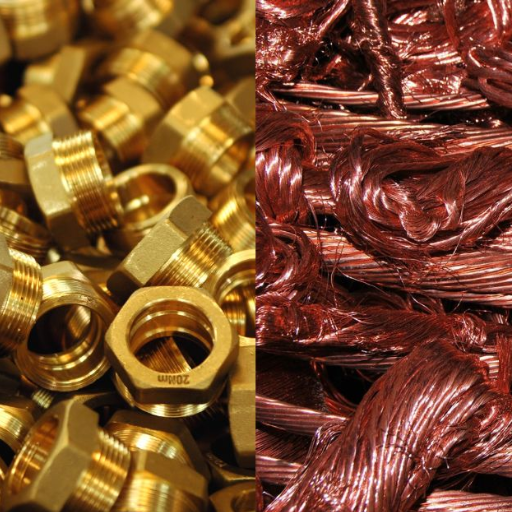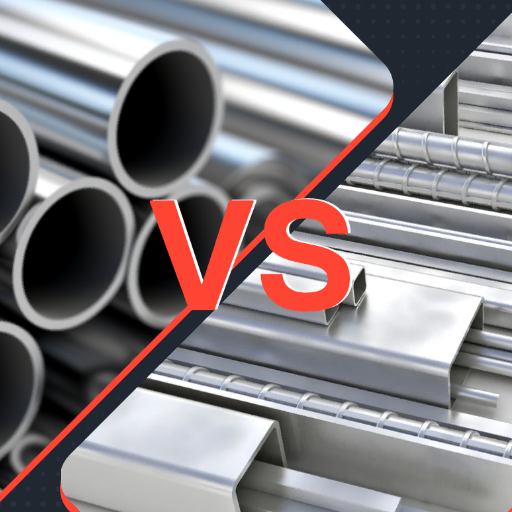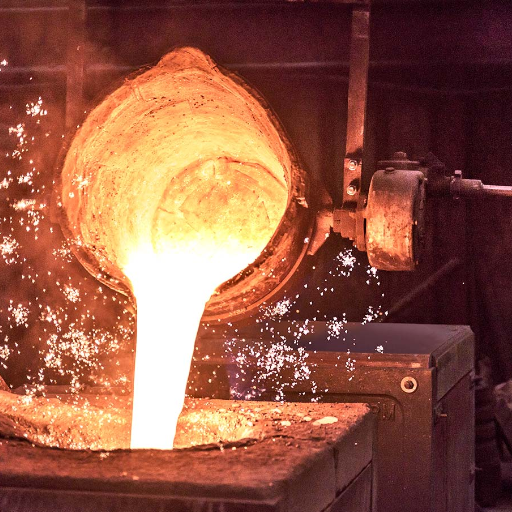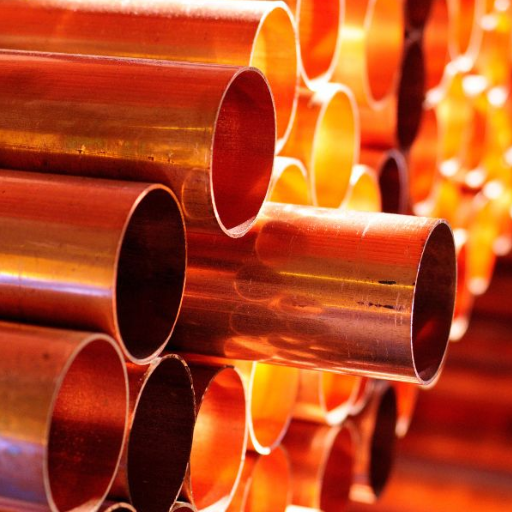When any company or engineer considers materials that satisfy the criteria of durability, versatility, and superior corrosion resistance, then the SUS 304 stainless steel is the most timeless industry standard. This alloy has been popularly referred to as the “workhorse” of stainless steel and is used in numerous applications, including kitchenware, medical instruments, and structural components in construction. The unique composition and characteristics of SUS 304 increase the value of this stainless steel in industries where strength and resilience are paramount. This in-depth article explains everything you need to know about SUS 304 stainless steel, including its chemical composition, desired properties, applications, and maintenance. Whether you are a professional needing information for a project or you simply want to know all the applications of that material in general, this article will always provide easy answers to your questions. Continue reading onward to find fresh insight into why SUS 304 remains one of those material gems for a gamut of product manufacture and beyond.
Overview of SUS 304 Stainless Steel
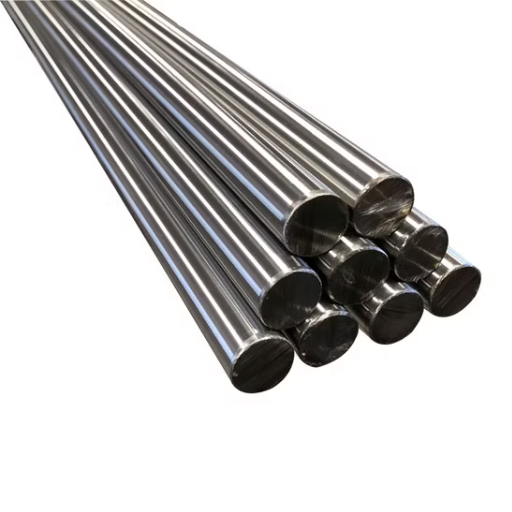
SUS 304 stainless steel is an austenitic stainless steel widely recognized for its excellent corrosion resistance, durability, and versatility. It is primarily composed of iron, with small amounts of chromium (18-20%), nickel (8-10.5%), carbon, manganese, and silicon, which enhance its performance. Regarding corrosion resistance against rust and oxidation, SUS 304 is preferred in environments with acid rain, high humidity, and the presence of chemicals. It has found applications in kitchen utensils, medical instruments, the automotive industry, and construction, among others, due to its mechanical strength and weldability. With its versatility and reliability, SUS 304 has become a common choice in various industries and consumer products.
What is SUS 304 Stainless Steel?
SUS 304 stainless steel primarily consists of chromium and nickel, typically containing 18-20% chromium and 8-10.5% nickel, in addition to small amounts of carbon, manganese, silicon, and trace elements. This composition provides SUS 304 with its hallmark attributes, including excellent corrosion resistance, high tensile strength, and remarkable durability. One of the defining aspects of SUS 304 is its ability to form a passive chromium-oxide layer on the surface, which shields it from further oxidation and ensures long-term resilience in various corrosive environments.
The mechanical properties of SUS 304 include a tensile strength of approximately 515 MPa (megapascals) and an elongation at break of around 40-60%, depending on the specific application and processing. Furthermore, due to an austenitic structure within the crystal lattice, it offers higher ductility, formability, and weldability options to the material. For hygienic applications such as food processing equipment, it is ensured that the material surface does not react, thus guaranteeing safety, compatibility with different chemicals, and cleaning techniques that employ SUS 304.
Key Characteristics of SUS 304
- Corrosion Resistance
SUS 304 mostly offers corrosion resistance in various aggressive atmospheres. The chromium present in it (generally 18-20%) forms an oxide layer, which affords the material protection from oxidation and rusting in regular conditions. This characteristic makes it particularly well-suited for use in humid or marine environments.
- Temperature Tolerance
The material spans a wide temperature range, operating from -196°C (-321°F) to 870°C (1598°F), remaining strong despite oxidation resistance under extreme temperatures, making it usable for both cryogenic and high-temperature applications.
- Mechanical Strength
SUS 304 stainless steel basically has tensile strength in the range of 515 to 735 MPa, with a minimum yield strength of 205 MPa. Properties, so reliable for structural or load-bearing applications, make it capable of standing under mechanical stress, hence its durability and dependability.
- Good Ductility and Formability
Due to its distinct structure, SUS 304 can be freely forged into any required form without risk of damage or cracking. It is a high elongation material with elongation over 40-60%, which means it has the ability to deform significantly before the material fails.
- Weldability
The alloy also exhibits excellent weldability using most conventional welding processes, with no heat treatment required after welding; this includes TIG welding, MIG welding, and resistance welding, making it ideal for use in complex or large fabrications.
- Non-Magnetic Properties
Differences Between SUS 304 and Other Grades
|
Parameter |
SUS 304 |
SUS 316 |
SUS 430 |
|---|---|---|---|
|
Composition |
18-20% Chromium, 8-10.5% Nickel |
16-18% Chromium, 10-14% Nickel, 2-3% Mo |
16-18% Chromium, negligible Nickel |
|
Corrosion Resistance |
Excellent, general environments |
Superior, resists chlorides and acids |
Good, lower than 304 and 316 |
|
Magnetic Properties |
Non-magnetic in annealed state |
Non-magnetic in annealed state |
Ferritic, generally magnetic |
|
Cost |
Economical |
Higher due to molybdenum addition |
Lower cost than 304 and 316 |
|
Weldability |
Excellent, no post-weld annealing needed |
Excellent, but requires increased care |
Moderate, sensitivity to heat |
|
Strength |
High tensile strength |
High tensile strength |
Moderate tensile strength |
|
Heat Resistance |
Good up to 870°C |
Excellent, even in high temperatures |
Lower resistance compared to 304/316 |
|
Applications |
Kitchenware, piping, auto trim |
Marine, chemical, medical applications |
Decorative, low-cost appliances |
Mechanical Properties of SUS 304
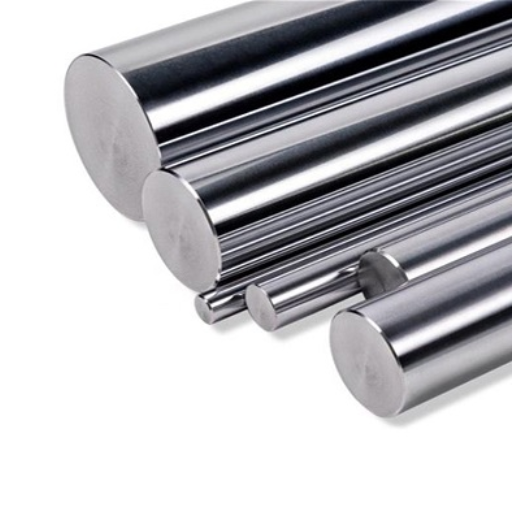
- Tensile Strength (Ultimate Tensile Strength, UTS): 515 – 720 MPa
It has very high tensile strength, resisting heavy stresses that can lead to failure.
- Yield Strength (0.2% Proof Stress): ≥ 205 MPa
SUS 304 exhibits a relatively consistent yield strength, demonstrating moderate resistance to deformation at loads above the yield point.
- Elongation at Break: ≥ 40%
This means that it has great ductility, allowing the material to be stretched or deformed to a great extent before it fractures.
- Hardness (Brinell, HB): ≤ 201
With moderate hardness, allowing for fair durability and workability, stainless steel is suitable for fabrication.
- Modulus of Elasticity: ~200 GPa
This describes the rigidity and the material’s ability to return to its original form after being deformed.
- Shear Strength: ~50% of tensile strength
SUS 304 possesses good performance against shear stress, which is vital for structural purposes.
- Density: 8.0 g/cm³
The density of the material has long supported its use for lightweight applications without compromising structural integrity.
- Thermal Conductivity: 16.2 W/m·K at 100°C
This acts as a moderate conductor of heat and requires stability.
- Melting Point: 1399 – 1454°C
Under high temperatures, one of the material qualities that enables it to perform excellently is its high melting point.
Tensile Strength and Yield Strength
SUS 304 is recognized globally for its elevated tensile strength, ranging from 515 MPa to 750 MPa, depending on the precise composition and treatment. Mostly, in the annealed state, the material’s yield strength is about 205 MPa, so it perfectly resists deformation under stress. These characteristics of SUS 304 make it often the preferred choice over others when applications that require durability and structural assurance are concerned, such as construction, automotive components, and industrial equipment. Moreover, through work hardening, the material’s strength is further enhanced appreciably during cold working, which significantly improves manufacturability in engineering applications.
Hardness and Ductility
A good balance of hardness and plasticity makes this steel the perfect choice for the very demanding spheres in which it is employed. The Vickers hardness of SUS 304 is typically between 200 and 220 HV in its annealed state, providing ample penetration resistance while retaining plasticity. In terms of ductility, SUS 304 exhibits an elongation of around 40%, indicating that it can undergo significant plastic deformation before failure. This outstanding balance enables the alloy to perform well in applications where toughness and deformation are crucial, such as deep drawing and bending. Moreover, this material has an austenitic crystalline structure that lends it even better-forming properties. Therefore, this gives engineers huge scope for application adaptation.
Impact Resistance
Impact resistance is one of the factors essential in determining whether a material is suitable for dynamic or sudden loading conditions that the particular application would subject it to. The superior impact resistance stems from an intrinsic metallurgical combination, with further enhancement achieved through advanced processing routes. Grain refining, achieved through controlled processes, reduces the likelihood of crack initiation and propagation when the alloy is subjected to high-impact stresses.
Present approaches to impact resistance assessment consider Charpy impact testing a benchmark. Data reveal that this alloy impressively absorbs energy at recorded values far exceeding those of conventional substances in its category. Furthermore, the sudden load failure mitigation is typically attributed to the toughening mechanism, where the austenitic phase undergoes strain-induced transformation, dissipating energy and thereby resisting sudden load failure. Resistance to sudden, tough loading plays a crucial role in automotive crash absorption, structural engineering, and aerospace component engineering.
Applications of SUS 304 Stainless Steel
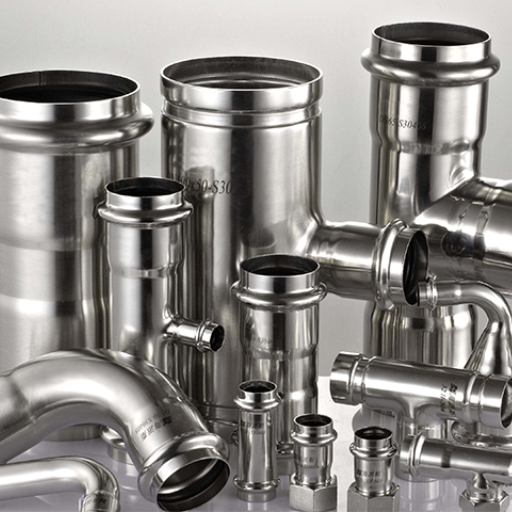
- Food and Beverage Industry
The primary reason for choosing SUS 304 is that it is non-reactive and resistant to acids and alkalis. It is, hence, in demand for manufacturing kitchen equipment such as sinks, cooking utensils, food processing equipment, and storage tanks. Food-grade standards thus ensure product safety and hygiene.
- Medical Equipment
SUS 304 has a wide range of applications due to its biocompatibility and ease of sterilization, making it suitable for use in surgical instruments, medical implants, and diagnostic equipment. Its resistance to frequent sterilization and cleaning, which is crucial for maintaining safety and integrity throughout the healthcare setting, is significant.
- Construction and Architecture
SUS 304 finds applications for external cladding, handrails, elevator panels, and architectural decorative features due to its pleasing appearance and resistance to environmental corrosion, its mechanical strength enabling its application in structural design in contemporary architecture.
- Automotive Industry
The material finds applications in exhaust systems, fuel tanks, and other areas where corrosion protection and durability are paramount. The role of the material in structures that are resistant to a crash demonstrates its capability to maintain its integrity under high strain.
- Chemical Processing Industry
Because SUS 304 has a wide-ranging chemical resistance against acids and chlorides, it suits heat exchangers, chemical storage tanks, and piping systems fittings.
- Marine Applications
Use in Construction and Architecture
Placing strength, aesthetic appeal, and resistance to environmental factors, SUS 304 gives steel its utmost application in contemporary structural and architectural design. Its corrosion resistance enables this steel to be relied upon for structural use, even when exposed to various weather conditions, including urban environments that may be hazardous due to accelerated corrosion rates. Application-wise, it is extensively used in cladding, roofing, and façades, which in turn provide this steel with its low-maintenance and high-resistance capabilities.
Thus, architects and engineers get to fully leverage its weldability and malleability in materializing very complex and innovative designs with much precision. Its capability to retain structural integrity during excessive mechanical stresses makes it a preferred choice for frameworks and handrails. It can also be taken into the alphabet of artistic expression, such as decorative wall panels or column cladding. Additionally, SUS 304 aligns well with industry criteria for sustainable development, as its recyclability can contribute to green building; therefore, it meets contemporary green construction initiatives.
Food Processing Industry
SUS 304 stainless steel is a popular choice for the food processing industry due to its excellent qualities of durability, hygiene, and corrosion resistance. Its non-reactive surface cannot absorb contaminants; it meets very strict standards for food safety, such as those set by the FDA and NSF, and this surface is resistant to bacterial growth. Hence, it can be used in situations where there is direct contact with either food or drink. The typical applications for the material include machinery parts, storage tanks, mixing equipment, and countertop applications, all of which need frequent cleaning and sanitizing. The oxidation resistance of the material at high temperatures provides an advantage during heat treatment, a crucial step in many processing environments. Moreover, it resists chemical exposure brought about by aggressive cleaning agents during disinfection. This ensures long-term use in the same environment while maintaining food-grade standards; hence, it is a necessary choice in enhancing efficiency and promoting safety in primary food processing applications.
Medical Equipment and Devices
Due to its superior corrosion resistance, enhanced strength, and biocompatibility, SUS 304 stainless steel leads the way in the manufacture of medical equipment and devices. Since its surface is chemically inert, there is little or no chance of contamination from the manufacture of surgical instruments, implants, or even hospital-grade furniture. The momentary furnishing of sterilizations would include autoclaving with high temperatures, thus ensuring hygienic condition reliability. Recently, manufacturing advancements have significantly improved the precision machining of SUS 304, enabling the creation of highly detailed designs relevant to minimally invasive surgical devices. Studies have shown that it excels far beyond regular materials in resisting pitting and crevice corrosion when exposed to bodily fluids or harsh cleaning agents, thereby fortifying its presence as a common material in medical usage.
Advantages of SUS 304 Stainless Steel
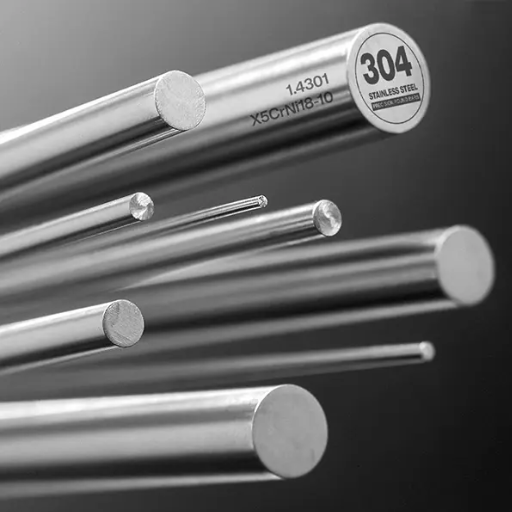
- Excellent Corrosion Resistance
SUS 304 stainless steel exhibits excellent corrosion resistance, especially to oxidizing agents and most acids. Consequently, they are used in manufacturing medical devices, food processing equipment, and marine installations. Research indicates that SUS 304 has a corrosion rate of less than 0.02 mm per year in typical atmospheric conditions, and therefore, it serves for a long time with excellent reliability.
- High Strength and Durability
The material has a tensile strength of approximately 515 MPa and a yield strength of 205 MPa, allowing it to withstand considerable mechanical stress without distortion. This makes the SUS 304 ideal for somewhat severe industrial or structural applications that require load-bearing parts.
- Ease of Fabrication
SUS 304 has good machining properties and will easily weld using standard procedures such as arc welding or resistance welding. Because of its work-hardening property, it can be formed in cold processes without sacrificing it toughness, allowing it to be formed accurately without fracture under pressure.
- Hygienic Qualities
The non-porous surface of SUS 304, and hence its antimicrobial properties, make it suitable for applications that require stringent hygiene, such as surgical instruments, food-grade piping, and pharmaceutical processing equipment. Its capacity to withstand recurrent cleaning cycles with strong disinfectants further promulgates its usefulness in sterile environments.
- Temperature Resistance
Cost-Effectiveness Compared to Other Materials
When weighing the aspect of cost-effectiveness, the material ticks all the boxes concerning balancing the initial investment against the commercial performance. Although the immediate purchase price may be somewhat higher than some alternatives, such as carbon steel or aluminum, the reduced maintenance costs more than offset the difference over time, due to its durability and corrosion-resistant features. For example, given its superb protection from corrosion and extreme heat effects, employing this material saves frequent replacements and downtime. Furthermore, through its high-temperature resistance, it benefits in energy-intensive processes by ensuring operational consistency and cutting energy loss that would otherwise occur from material breakdown. Hence, this material stands as a strategically economical choice, especially in heavy industrial and high-stress environments.
Versatility in Various Applications
Maintenance Tips for SUS 304 Stainless Steel
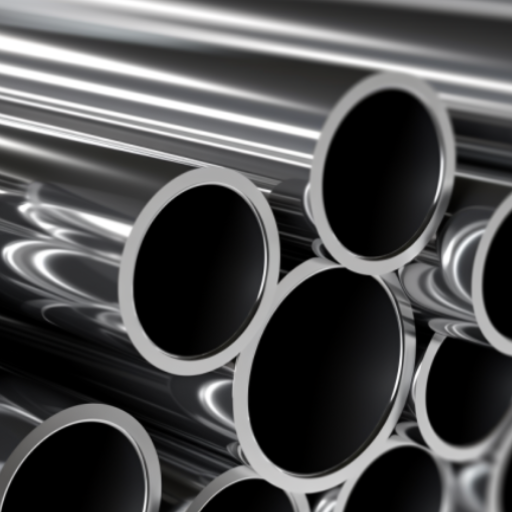
- Regular Cleaning: Clean the surface frequently with a solution of mild soap or detergent in warm water so dirt and contaminants do not accumulate. Avoid abrasive cleaners that will harm the surface finish.
- Prevent Corrosion: Though SUS 304 is considered corrosion-resistant, chemicals and salt may cause damage over time. Clean all surfaces that may come in such contact with clean water and dry them immediately.
- Avoid Scratches: Use a clean cloth or sponge without abrasives to avoid compromising the nice smooth finish and scratching the surface.
- Minimize Contact with Metals: Avoid contact with dissimilar metals, particularly in moist environments, to reduce the chances of galvanic corrosion.
- Monitor Environmental Conditions: Periodically check for discoloration or signs of breakdown caused by extremes of temperature, humidity, and pollution on outdoor or industrial applications and maintain accordingly.
- Use Protective Coatings: Apply a stainless steel polish or passivation solution as a protective coating when there is potential for effective exposure to aggressive environments.
Cleaning and Care Instructions
- Routine Cleaning: Use warm water and mild detergent to provide an initial clean, removing dirt, grease, and ordinary stains. The solution should be applied with a soft cloth or sponge and thoroughly rinsed off afterward with clean water to prevent residue buildup.
- Preventing Scratches: Always use non-abrasive cleaning tools, such as microfiber cloths or soft nylon brushes. Avoid steel wool or scouring pads, as these can scratch the surface and may embed particles that lead to rusting.
- Fingerprints and Smudges: For surfaces often touched, use a proper stainless steel cleaner or diluted white vinegar. There are special stainless steel cleaners or diluted white vinegar mixed with water. Wipe along the grain of the steel for the best effect and to avoid streaks.
- Dealing With Stubborn Stains or Rust: Stubborn stains can be treated with a paste of baking soda and water or a commercial stainless steel cleaner that is suitable for your particular grade of steel. Gently rub the paste on the stained area using a soft cloth and rinse, dry thoroughly afterward.
- Avoid Chlorides: Avoid chlorides as wastes in bleach or some cleaning agents because they will provoke corrosion faster. Use only cleaning products that are chlorine-free to ensure a protective surface of the material.
Preventing Corrosion and Damage
- Control Environmental Factors: High humidity and saline environments are very conducive to corrosion attack, particularly of stainless steel and other non-ferrous metals. In an indoor environment, install dehumidifiers, and wherever materials are exposed to harsh outdoor conditions, ensure protective coatings have been applied.
- Regular Maintenance: Create a maintenance schedule for inspecting both surfaces and components for signs of corrosion, such as discoloration or pitting. Treatment thereof in time can largely lessen the damage. Cleaning them periodically with fine, soft materials helps keep them clean from dust and dirt, which can cause corrosion.
- Use of Protective Measures: Coating, sealing, or anodizing the process protects materials to a greater extent by way of creating a bond against moisture, oxygen, and pollutants. In addition, galvanization is another effective way to protect against rust, a process that involves providing a protective zinc coating to ferrous metals.
- Material Selection: It is possible to drastically cut down the chances of environmental damage by using corrosion-resistant materials such as stainless steel alloys that have a higher percentage of chromium or molybdenum. Survey the process in which you intend to use it to come up with a suitable metal grade in harmony with their longevity prospects and exposure levels.
- Minimize Crevice Formation: Crevices and tight joints can accumulate moisture and debris, thereby triggering the onset of localized corrosion points. Go for a design with fewer crevices and good ventilation as a preventive measure. Proper welding and smooth finishes can also reduce the potential for crevice corrosion.
Regular Inspection and Maintenance Practices
Reference Sources
-
- Key Findings: This study explored the effects of copper (Cu) content and aging treatment on SUS 304 stainless steel. Adding Cu improved antibacterial properties, particularly against Staphylococcus aureus, with optimal results at 2% Cu. However, higher Cu content reduced corrosion resistance.
-
Use of Stainless Steels in the Industry: Recent and Future Developments:
- Key Findings: This paper reviewed the transition from conventional materials to advanced stainless steel grades like lean duplex and superaustenitic steels. It highlighted the use of these materials in applications such as seawater desalination, chemical storage, and phosphoric acid production.
Frequently Asked Questions (FAQs)
Q: What are the mechanical properties of SUS 304 stainless steel?
A: SUS 304 stainless steel, also known as 304 stainless steel, exhibits excellent mechanical properties that make it popular in various applications. It has a yield strength of approximately 215 MPa and an ultimate tensile strength of about 505 MPa. This grade of stainless steel is characterized by high ductility, which allows it to be formed into different shapes without breaking. Additionally, its elongation percentage is typically around 40%, indicating its ability to stretch under tension. Such mechanical properties make SUS 304 suitable for use in kitchen sinks, tableware, and items requiring durability. The combination of strength and formability is what sets SUS 304 apart from lower grades like 201 stainless steel.
Q: What is the chemical composition of 304 stainless steel?
A: The chemical composition of 304 stainless steel includes approximately 18% chromium and 8% nickel, which contribute to its corrosion resistance and overall strength. This composition makes it part of the 18-8 stainless steel family, known for its durability and versatility. Additionally, it contains trace amounts of carbon, manganese, and silicon, which further enhance its properties. The presence of chromium provides a protective oxide layer that helps prevent rust, while nickel adds to its toughness. This combination makes stainless steel 304 a popular choice for applications in food processing and kitchenware, where food safety is paramount. Understanding the chemical composition is crucial for selecting the right material for specific environments.
Q: What is the difference between SUS 304 and 316 stainless steel?
A: The main difference between SUS304 and 316 stainless steel lies in their chemical composition and corrosion resistance. While both grades have similar mechanical properties, 316 stainless steel contains molybdenum, which significantly enhances its resistance to pitting and crevice corrosion, especially in chloride environments such as salt water. On the other hand, SUS304 stainless steel is cost-effective and generally sufficient for most indoor applications, including kitchen sinks and food-grade containers. The choice between SUS304 and 316 should be based on the specific application and environmental factors, as 316 is often preferred in marine and chemical processing industries due to its superior corrosion resistance. In summary, if you’re dealing with harsher environments, 316 stainless steel may be the better option.
Q: Is SUS304 stainless steel food safe?
A: Yes, SUS304 stainless steel is considered food safe and is widely used in food processing and kitchen applications. Its low nickel content and high chromium levels contribute to its corrosion resistance, ensuring that it does not leach harmful substances into food. This grade of stainless steel is commonly used for kitchen sinks, cookware, and tableware, making it a reliable choice for food-grade products. Additionally, SUS304 stainless steel is easy to clean and maintain, which is essential in food preparation environments. Its durability ensures that it can withstand everyday use without compromising safety. Therefore, if you’re looking for a material that is both safe and long-lasting for food applications, SUS304 is an excellent option.
Q: What are the corrosion resistance properties of 304 stainless steel?
A: 304 stainless steel is renowned for its corrosion resistance, primarily due to its chromium content, which forms a protective oxide layer on its surface. This layer prevents rust and corrosion from forming, making it suitable for a variety of applications, including in humid and acidic environments. However, it’s important to note that while 304 offers good resistance to many corrosive substances, it may not perform as well as 316 stainless steel in saltwater applications or environments with high chloride exposure. For applications involving intergranular corrosion or stress corrosion cracking, it’s essential to consider the specific environmental conditions. Overall, 304 stainless steel is a reliable choice for most applications, providing a strong resistance to corrosion in everyday environments.

